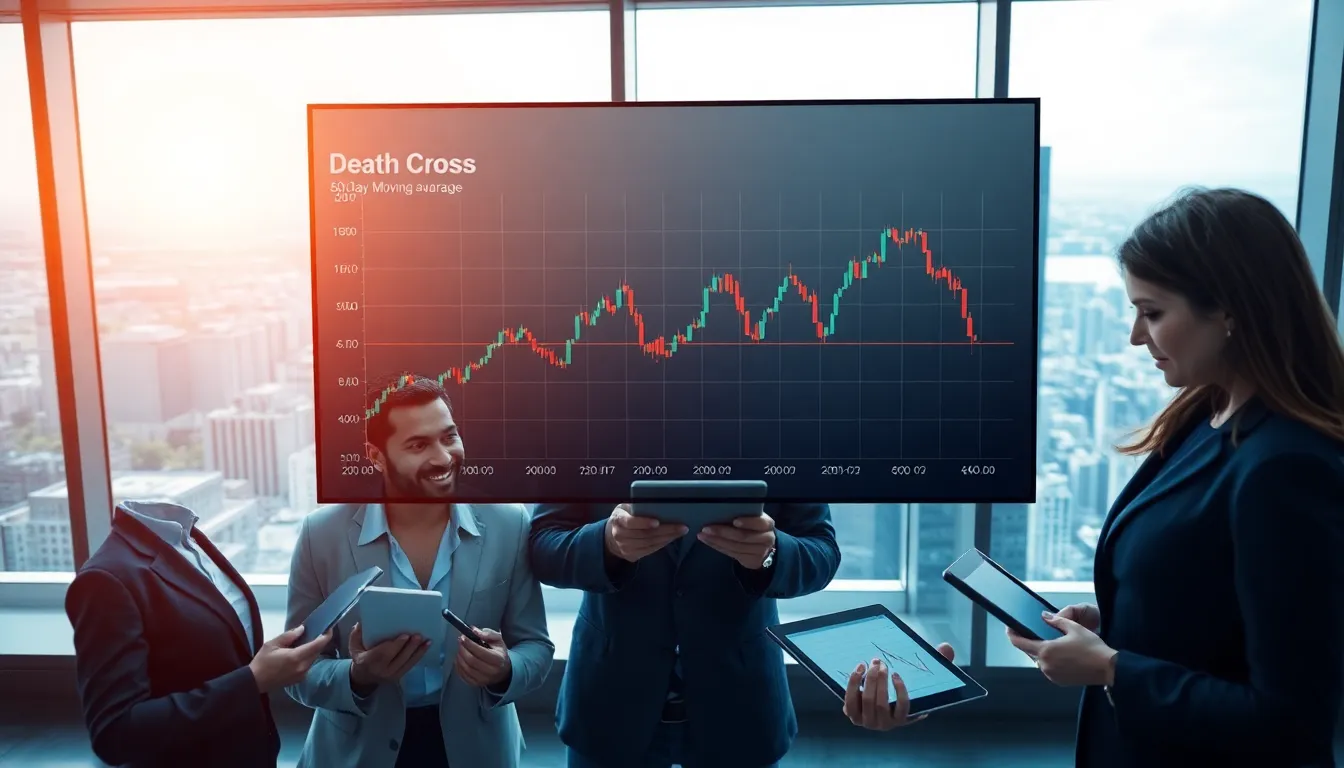Table of Contents
ToggleIn the unpredictable world of investments, the term “death cross” might sound like something straight out of a horror movie. But don’t worry: it’s not nearly as dramatic as it sounds, unless, of course, your portfolio is hanging by a thread. So what is this elusive financial phenomenon, and why should everyone from seasoned traders to rookie investors keep their eyes peeled for it? Stick around, because understanding the death cross could save your investments from a grisly fate.
What Is a Death Cross?

A death cross occurs on a stock chart when the short-term moving average crosses below the long-term moving average, usually the 50-day moving average crossing beneath the 200-day. This isn’t just technical jargon: it’s a strong signal that the momentum of a stock or index is faltering, often indicating potential further declines.
How a Death Cross Forms
The formation of a death cross can be likened to a warning bell ringing in the investment world. Imagine it as Mother Nature sending investors an SOS. It typically happens when a stock has been treading water at a high price, but underlying issues push the shorter average down. Investors begin to feel apprehensive, leading to selling pressure that propels the decline.
Key Indicators of a Death Cross
To identify a death cross, one must follow the moving averages closely. Look for the moment the 50-day average dips below the 200-day average. Volume trends may also confirm a death cross: elevated selling volume could amplify the signal, making investors perk up their ears before the storm hits.
Historical Context of Death Crosses
Understanding historical instances of death crosses can provide valuable insights. Many investors find comfort in patterns, believing that history often repeats itself.
Notable Examples in Stock Market History
For instance, the S&P 500 witnessed a notable death cross in December 2018. It foreshadowed a tumultuous market phase where anxiety about rising interest rates and global trade tensions reignited fears. Investors panicked, selling off stocks and resulting in greater losses. On the other hand, the death cross in early 2020, right before the pandemic, served as yet another chilling example. It underlined the impact of unforeseen global events on market performance.
Analyzing the Market Response Post-Cross
After a death cross materializes, market reactions can vary widely. Some stocks plunge dramatically, while others recover faster than a cat with nine lives. Market analysts often scrutinize recent trends to gauge the possible outcomes.
The common trajectory post-death cross might see prices continuing to decline for weeks or even months. Yet, there have been instances where markets rebound almost immediately. Potential bounce-back patterns can often suggest market corrections or shifts in investor sentiment.
Common Misconceptions About the Death Cross
Even though its ominous name, not everything associated with a death cross is negative. There are widespread misconceptions surrounding this topic that need addressing.
Using the Death Cross in Investment Strategies
For many, the death cross is viewed solely as a sell signal. But, savvy investors recognize that it can also represent a buying opportunity, especially if the stock has sound fundamentals and there’s potential for recovery. Timing the market might not always be the best approach, but understanding the underlying reasons can help in crafting a strategic response.
Combining Death Cross with Other Indicators
The death cross shouldn’t stand alone in the analysis. Investors are advised to integrate it with additional technical indicators like the relative strength index (RSI) or MACD (moving average convergence divergence). Combining these signals helps paint a clearer picture, reducing the chances of making hasty investment decisions.
Risk Management Techniques When Facing a Death Cross
Risk management is crucial when navigating the choppy waters of a death cross. Ignoring the implications can spell disaster for even the most experienced investors.
Diversification remains one of the most dependable techniques. Spreading investments across various sectors or asset classes allows for cushion effects should a death cross occur. Setting stop-loss orders can also protect against massive downturns, serving as a safeguard for one’s portfolio. Finally, regularly reviewing and adjusting investment strategies can mitigate the long-term impacts of market crises.







